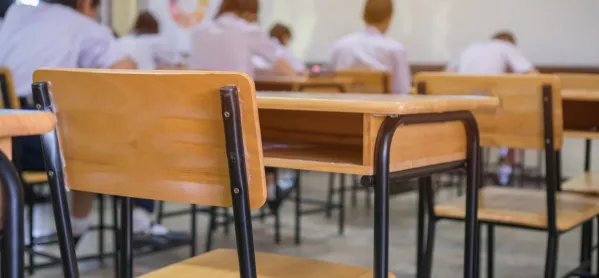- Home
- GCSEs: 1000s of private school grades may be inflated
GCSEs: 1000s of private school grades may be inflated

More than 6,300 GCSE pupils, mostly from private schools, may have received “disproportionately overestimated” grades, analysis by Ofqual has found.
The findings were revealed in a technical report, published by the exams regulator today, which analyses the grades achieved by pupils of different genders, special educational needs status, ethnic backgrounds and eligibility for free school meals.
A levels: Private schools open up gap, despite U-turn
GCSEs: Half of students get ‘strong passes’ in three Rs
GCSEs 2021: Ofqual looking at multiple choice and mocks
Ofqual said it found “some evidence” that thousands of lower-attaining pupils from private schools with unknown socio-economic status “may have received disproportionately overestimated grades”.
“There was some evidence that some 6,300 GCSE entries by low prior attainers with unknown socioeconomic status (most of whom are at independent schools) may have received disproportionately overestimated grades,” Ofqual’s report said.
“This effect was equally noticeable in grades using CAGs (centre assessment grades), calculated grades and final grades. The effect was not seen for A level,” it added.
GCSE candidates were awarded either CAGs this year or the grade they would have been awarded by Ofqual’s algorithm if this was higher, after the government decided to U-turn on its grading algorithim following an outcry.
Ofqual’s report said it found “no evidence” to “suggest that any groups of candidates who share a protected characteristic or socio-economic status have been systematically disadvantaged” by results in 2020
In a blog from FFT Education Datalab, statisticians Dave Thomson and Philip Nye said that while concern had been expressed over the summer “about the likely effect of bias on the centre-assessment grades for particular groups of pupils, notably disadvantaged and black students”, the Ofqual analysis showed that attainment gaps had not widened.
Mr Nye and Mr Thomson noted that the attainment gap between disadvantaged pupils and their peers had narrowed in 2020 after slightly increasing in 2018 and 2019.
However, while the attainment gap for disadvantaged pupils narrowed at grade 4 - seen as a GCSE “standard pass” - it widened at grade 5, seen as a “strong pass” and the equivalent of a low B or high C grade in pre-reformed GCSEs.
“The distributions of attainment for disadvantaged and other pupils are different,” they said.
“The gap in the percentage of pupils achieving grade 4 or above in English and maths narrowed by 2 percentage points but the gap in the percentage achieving grade 5 increased by 1 percentage point.”
They added that the “attainment of the lowest-attaining ethnic groups in 2019 - Gypsy/Roma, Irish heritage traveller and black Caribbean - tended to improve the most in 2020”.
Professor Becky Francis, chief executive of the Education Endowment Foundation, said the finding that the disadvantage gap had not widened was “welcome” but cautioned that school closures in the pandemic could see the gap widen in the future.
“It is welcome news that the disadvantage gap for this year’s GCSE students hasn’t widened as a result of changes to this year’s grade awards in the absence of exams. However, the risk for future years is very real,” she said.
“Our own evidence has highlighted the risk of a decade’s progress in closing the disadvantage gap being reversed as a result of the Covid-19 closure of schools to most pupils.
“It’s important that the disproportionate impact of missed learning time on students from socially disadvantaged backgrounds is accounted for in the way future year groups are assessed.”
Mr Nye and Mr Thomson said the data released today was not “conclusive evidence” that some groups of pupils hadn’t been disadvantaged by the grading system in 2020, because if the differences between centre assessment grades and exam grades tended to be larger for lower-attainers than higher-attainers, “then it should be no surprise that groups of pupils with proportionally more lower-attainers should appear to have improved by a greater margin”.
“Nonetheless, the early results give a degree of confidence that disadvantaged pupils and those from ethnic groups who, on average, have lower attainment won’t be further disadvantaged if centre-assessment grades have to be used again in 2021,” they said.
Keep reading for just £1 per month
You've reached your limit of free articles this month. Subscribe for £1 per month for three months and get:
- Unlimited access to all Tes magazine content
- Exclusive subscriber-only stories
- Award-winning email newsletters



